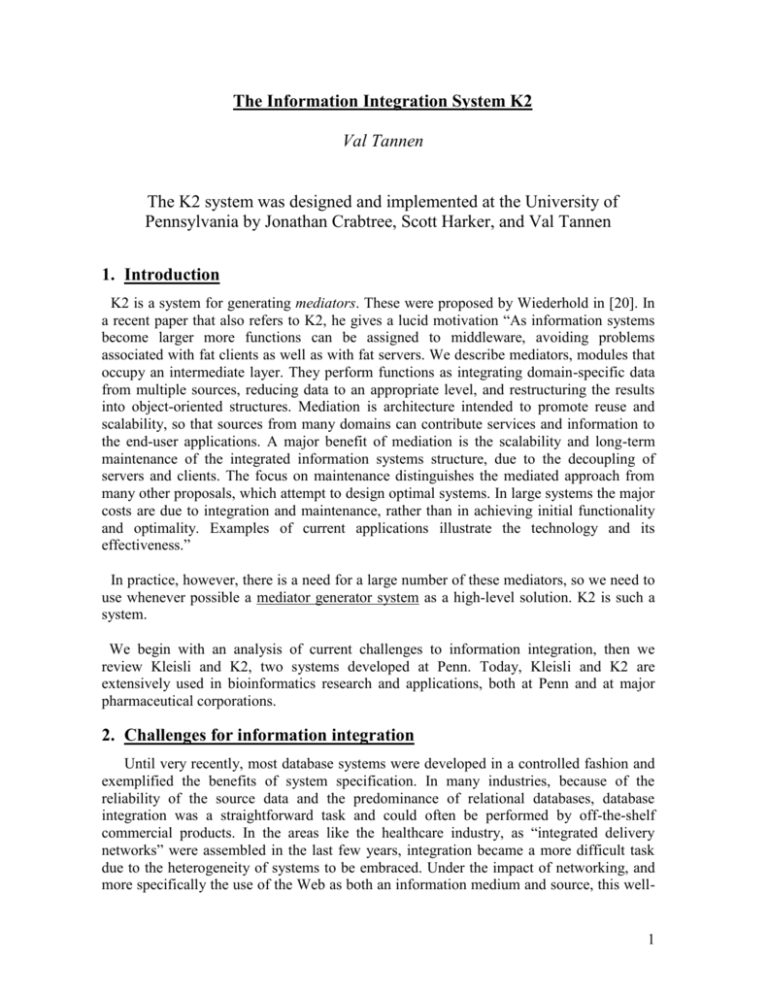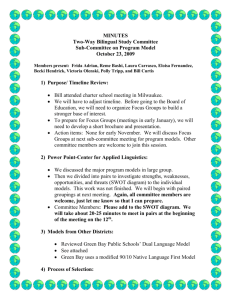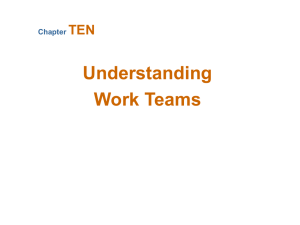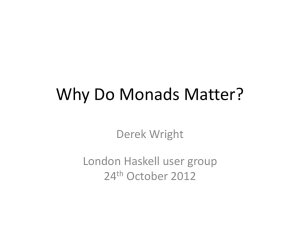The Information Integration System K2
advertisement

The Information Integration System K2
Val Tannen
The K2 system was designed and implemented at the University of
Pennsylvania by Jonathan Crabtree, Scott Harker, and Val Tannen
1. Introduction
K2 is a system for generating mediators. These were proposed by Wiederhold in [20]. In
a recent paper that also refers to K2, he gives a lucid motivation “As information systems
become larger more functions can be assigned to middleware, avoiding problems
associated with fat clients as well as with fat servers. We describe mediators, modules that
occupy an intermediate layer. They perform functions as integrating domain-specific data
from multiple sources, reducing data to an appropriate level, and restructuring the results
into object-oriented structures. Mediation is architecture intended to promote reuse and
scalability, so that sources from many domains can contribute services and information to
the end-user applications. A major benefit of mediation is the scalability and long-term
maintenance of the integrated information systems structure, due to the decoupling of
servers and clients. The focus on maintenance distinguishes the mediated approach from
many other proposals, which attempt to design optimal systems. In large systems the major
costs are due to integration and maintenance, rather than in achieving initial functionality
and optimality. Examples of current applications illustrate the technology and its
effectiveness.”
In practice, however, there is a need for a large number of these mediators, so we need to
use whenever possible a mediator generator system as a high-level solution. K2 is such a
system.
We begin with an analysis of current challenges to information integration, then we
review Kleisli and K2, two systems developed at Penn. Today, Kleisli and K2 are
extensively used in bioinformatics research and applications, both at Penn and at major
pharmaceutical corporations.
2. Challenges for information integration
Until very recently, most database systems were developed in a controlled fashion and
exemplified the benefits of system specification. In many industries, because of the
reliability of the source data and the predominance of relational databases, database
integration was a straightforward task and could often be performed by off-the-shelf
commercial products. In the areas like the healthcare industry, as “integrated delivery
networks” were assembled in the last few years, integration became a more difficult task
due to the heterogeneity of systems to be embraced. Under the impact of networking, and
more specifically the use of the Web as both an information medium and source, this well-
1
controlled environment has largely broken down, simply because the scope of what we
mean by distributed information management has greatly widened. Organizations now see
that there is enormous value to be gained by tying their existing resources to external data
sources, but these are sources over which they have no control.
There are several aspects to this breakdown. First, data sources are highly derivative,
and are often copied from one another with little attention to the preservation of semantic
integrity. Second, the structure of data is highly volatile: data sources are constantly being
restructured and others emerge or disappear to suit organizational needs. Third, data is
often delivered only in some loosely structured form such as a Web page; also data
exchange and data transmission formats are being increasingly used as database
management systems, in which case the structure may be highly controlled. Much data also
still exists in legacy systems or in “boutique” information management systems originally
developed to serve the needs of small communities.
Another situation is that of data that is actually managed in modern standard DBMS but
is offered to the public through very limited interfaces that evolved to provide the needs of
a few clients. Finally, useful data can be buried in application programs and is accessible
only in limited ways. How are we to construct tools that can perform reliably in the face of
this apparent breakdown of specifications?
Against this landscape of data sources stands the increasing reliance on data analysis,
data mining, and decision support tools that depend on robust forms of data specification.
As a consequence, application software developers are increasingly facing the problem of
transforming and integrating data from a distributed, heterogeneous and variable multitude
of sources. Typical solutions involve building (materialized) data warehouses in order to
manage the complexity of the data and harness it into analysis tools. Other solutions rely on
building on-the-fly un-materialized views by decomposing queries into subordinate queries
routed to the appropriate data sources and then combining the answers of these queries.
Finally, we summarize some of the aspects that need to be dealt with by a successful
approach to information integration:
1. use of un-materialized views; a good strategy for scalability is to begin with one or
more such views that are easily re-programmable and use them while the
requirements are still volatile; in a second phase, some of the views would be
replaced with materialized warehouses, leading to an increase in efficiency (such a
transition should be done transparently for the consumers of the data).
2. dynamic integration of data consumers and data sources
3. scalability is a central consideration in responding to the challenges of distributed
information management and a new consumer of data, such as a data analysis
application, or an ad-hoc query facility should be able to use data that is integrated
and transformed by an on-going application.
4. data interface specifications; precise and expressive specifications are indispensable
for making the components of distributed information management work together
in a scalable way.
2
5. high-level specifications for transformations/integrations; these are crucial for
compatibility with the data interface specifications, for dynamic reconfiguration,
and for enhanced productivity.
6. information quality; the goal is to develop ideas to reason about the accuracy and
reliability of information sources; while this is not a specific objective of this
proposal, being able to choose between redundant sources is a promising solution to
some of the proliferation of information that we witness.
In the next sections, we describe the two mediator systems that have been developed at the
University of Pennsylvania: Kleisli and K2.
3. Kleisli
The initial effort at Penn in this area, by Limsoon Wong and others, has materialized in
the successful Kleisli system [11]. A principal novelty of this system was the query and
transformation language CPL [16]. Based on the principle that database query languages
can be constructed from some fundamental operations used in the types used in
specification of a database, CPL can be used against free combinations of tuple, variant,
set, multiset, list and array types. It naturally extends the relational algebra to these types,
based on a formal foundation grounded in the mathematical theory of categories [17].
Rewrite rules were developed from this formal basis, resulting in a powerful paradigm for
optimization that naturally extended to this more complex type system those widely used in
relational databases. The language and optimization techniques have been implemented in
the Kleisli system, which provides generic access to a wide variety of types of external data
sources through functions registered within the Kleisli library.
Kleisli has the ability to specify transformations involving complex datatypes found
throughout biomedical data applications and the ability to specify transformations in a
partial, step-wise manner. The ability to partially specify transformations is very useful as
data sources are large and complex, and frequently difficult to understand in their entirety.
The system has generic interfaces to relational databases, such as:
Oracle and Sybase
ASN.1 databases (with or without the the Sortez interface)
the object-oriented database prototype Shore and other object-oriented databases
SRS indexed files
We note that ASN.1 is a typical EDI format and that integrating other such formats (eg.
EDIFACT) is quite similar. Non generic interfaces (because the sources are not generic)
have been developed for a number of data sources including the BLAST and FASTA
sequence analysis packages, EcoCyc, US and IBM patent databases and numerous Web
interfaces.
Kleisli has been deployed with considerable success for bioinformatics support within the
Human Genome Project. In particular, Kleisli has been used to answer a number of queries
claimed to be unanswerable “until a fully relationalized sequence database is available” in a
3
1993 meeting report published by the Department of Energy. The Kleisli technology has
been incorporated into commercial products.
4. K2
The current effort at Penn in this area has materialized in a first prototype for the K2
system and the work on the optimization of K2 queries. The K2 information integration
System is an intellectual successor to Kleisli, while at the same time responding to a
number of new challenges and taking advantage of very recent research results. Here is a
list of the salient features of K2:
K2 has a “universal” internal data model with an external data exchange format for
interoperation with similar components.
It has interfaces based on the ODMG [10,18] standard for both data definition and
queries.
It integrates all the kinds of data that Kleisli can integrate, while offering in addition a
Java-based interface (JDBC) to relational database systems and of course an ODMG
interface to object-oriented database systems.
Part of K2 is a new way to program integration–transformation–mediation in a very
high-level declarative language (K2MDL) that extends ODMG.
It is easy to interoperate with external or internal decision-support systems.
It has an extensible and configurable rule-based optimizer.
It has a polymorphic type system that facilitates generic components and transparent
data source evolution.
It generalizes aggregate queries to the types used in Kleisli [17]
Written entirely in Java, K2 is more portable than Kleisli; furthermore, it can be used to
generate integration components, mediators, which have a small footprint and can be
combined in a hierarchical fashion. The basic functionality of such a mediator is to
implement a data transformation (and therefore integration) from one or more data sources
to one data target. In the K2 approach, the component will contain a high-level (ODMG)
description of the schemas (for sources and target) and of the transformation (in K2MDL).
From the target's perspective, the mediator offers a view, which in turn can become a data
source for another mediator.
K2 also uses ODL to represent the data sources to be integrated. It turns out that most
biological data sources can be described as “dictionaries” returning complex values. A
dictionary is a finite function which consists of a domain of and an association that maps
each of the keys in the domain into a value (which can be a complex structure such as a
set). To describe integration, K2 uses a new language, K2MDL, which combines the syntax
of ODL and OQL to specify data transformations from multiple sources to one target. The
key to making ODL, OQL, and K2MDL work well together is the expressiveness of the
internal framework of K2, which is based on complex values and dictionaries. ODL classes
with extents are represented internally as dictionaries with abstract keys (the object
identities). This framework opens the door to interesting optimizations that make this
approach feasible.
4
As with Kleisli, a tremendous enhancement in productivity is gained by being able to
express complicated integrations in a few lines of K2MDL code as opposed to much larger
programs written in Perl or C++. What this means for the system integrator is the ability to
build central client/server or mix-and-match components that inter-operate with other
technologies. Among other things, it provides:
enhanced productivity (50 lines of K2MDL correspond to thousands of lines of C++);
maintainability, and easy transitions (eg. warehousing)
reusability (structural changes easy to make at the mediation language level).
compliance with ODMG standards
ODMG was founded by OODBMS vendors and is affiliated with OMG (Object
Management Group -- CORBA). ODL is an extension of CORBA’s IDL (Interface
Definition Language).
The choice of ODMG gives us two standards; ODL, the data definition language in which
we can describe how data elements can be referred to, and OQL, the enhanced SQL-92-like
language in which we can write queries.
Here are some advantages of ODMG that K2 leverages upon:
rich modeling capabilities.
mixes seamlessly relational, object-oriented, information retrieval (dictionaries), and
EDI (e.g., ASN.1) data.
compatibility with UML is easy to achieve with straightforward back and forth
mappings between ODL and class diagrams.
integration with XML (with a given DTD) easily.
official bindings to Java, C++ and Smalltalk
industrial support from ODMG members (Ardent, Poet, Object Design).
increasingly used in information integration projects, e.g., Garlic at IBM, Disco at
INRIA, K2 at Penn, The Molecular Biology Ontology at certain pharmas.
5. An example in healthcare management
Let us illustrate with an example the essence of the approach. In what follows we give an
example of an ontology, which is a schema as viewed by a class of users, and how a
mediator generated by K2 could implement it in terms of standard data sources. Consider,
in ODL syntax, the data description below, part of a simple ontology:
class Patient
(extent patients)
{
attribute string name;
attribute long patientID;
attribute int age;
relationship set<Clinician> patientOf
inverse Clinician::clinicianOf;
}
5
class Clinician
(extent clinicians)
{
attribute string name;
attribute Address address;
relationship set<Patient> clinicianOf
inverse Patient::patientOf;
}
The idea here is that we record data about patients, in the form of ID, name, age, and a
set of “references” to clinicians that have the patient under care. We also record data about
clinicians, with name, address, and a set of references to all the patients under care. While
name, age, and ID are attributes with simple values, strings and integers, the address is
actually a complex value. Such a value is described in ODL through an interface
declaration. The reason interfaces are used instead of classes is that classes are normally
expected to have an extent but addresses are just complex values and their extent is not
finite.
interface Address
{
attribute string
attribute
attribute
attribute
attribute
attribute
attribute
attribute
}
country;
Division largeDiv;
Division smallDiv;
Location location;
string street;
int number;
string numberModifier;
string appartment;
interface Division
{
attribute string name;
}
interface State extends Division {}
interface Province extends Division {}
interface County extends Division {}
interface Parrish extends Division {}
interface Location
{
attribute string name;
}
6
interface City extends Location {}
interface Town extends Location {}
interface Village extends Location {}
Now assume that at execution time the data about patients and clinicians resides in (for
illustration purposes) three databases. Some patient data is in a relational database with the
following schema:
CREATE TABLE Pat
(name
string,
pid string,
dob
Date
);
-- has fields year, month, etc
Some of the clinician data is in an object-oriented database with the following schema:
class Clin
(extent clins key name)
{
attribute string name;
attribute Address address;
}
and the data that connects the two is in another relational
database with the following schema:
CREATE TABLE Case
(caseNo string,
patID string,
clinName string
);
Next we give the K2MDL description of the integration and transformation that is
performed when the sources Pat, Clin and Case are mapped into the ontology view.
K2MDL descriptions look like the ODL definition in the ontology, enhanced with OQL
expressions that compute the class extents, the attribute values, and the relationship
connections. The keyword self refers to the identifier (oid) of the object whose attributes
we currently compute. This oid is an element of the extent of the class. For simplicity, we
assume a built-in function stringToLong that converts integers from string form.
define
dob2age(dob)
as
currentYear - dob.year
class Patient
(extent patients { select x.pid from Pat x })
{
attribute string name
7
{ element(select x.name from Pat x where x.pid=self) };
attribute long patientID
{ stringToLong(self) };
attribute int age
{ dob2age(element(select x.dob
from Pat x
where x.pid=self)) };
relationship set<Clinician> patientOf
inverse Clinician::clinicianOf
{ select x.clinName from Case x where x.patID=self };
}
class Clinician
(extent clinicians { select x.name from clins x })
{
attribute string name
{ self };
attribute Address address
{ select x.address from clins x where x.name=self };
relationship set<Patient> clinicianOf
inverse Patient::patientOf
{ select x.patID from Case x where x.clinName=self };
}
OQL is a very expressive query language. For example, if the ontology had somewhere
an attribute with the average of a certain test over the last 5 days, assuming that the lab tests
are accessible, say, by a Web-like interface we model as a dictionary:
LabTests : dictionary < string, set<struct{Date timestamp,
float value}>>
We would it compute it as follows:
attribute float c1_last5days
{ avg ( select x.value
from LabTests[self] x
where x.timestamp.day < ( currentDay - 5 )
};
What we hope this example illustrates is that relatively complex integrations and
transformations can be expressed concisely and clearly, as well as modified easily. Some of
our current research focuses on optimizations [13,14] that may, in the future, be
incorporated in K2.
8
6. REFERENCES
1) Wiederhold, G. “Value-added Middleware: Mediators” (draft in progress - http://wwwdb.stanford.edu/pub/gio/1998/dbpd.html), March 1998.
2) Wiederhold G., Genesereth, M., "Basis for Mediation"The Conceptual Basis for
Mediation Services"; IEEE Expert, Intelligent Systems and their Applications, Vol.12
No.5,Oct 1997.
3) Yannis Papakonstantinou, Hector Garcia-Molina, and Jennifer Widom. Object
exchange across heterogenous information sources. In
Proceedings of IEEE
International Conference on Data Engineering , pages 251--260, March 1995.
4) Extensible Markup Language (XML) 1.0,World Wide Web Consortium (W3C)}, 1998,
http://www.w3.org/TR/1998/REC-xml-19980210.
5) Serge Abiteboul, Dallan Quass, Jennifer Widom Jason McHugh, and Janet L.
Wiener. The lorel query language for semistructured data. International Journal on
Digital Libraries , 1(1):68--88, 1997.
6) V.S. Subrahmanian et. al.
HERMES
: Heterogenous reasoning and mediator
systems, 1997, Available at www.cs.umd.edu//projects/hermes/overview/paper..
7) M. Tork Roth, Manish Arya, Laura M. et al. “The Garlic project.” In H. V. Jagadish
and Inderpal Singh Mumick, editors, Proceedings of the 1996 ACM SIGMOD
International Conference on Management of Data , page 557, Montreal, Quebec,
Canada, 4--6 June 1996.
8) Alon Y. Levy, Anand Rajaraman, and Joann J. Ordille. Querying heterogeneous
information sources using source descriptions. In VLDB'96, Proceedings of 22th
International Conference on Very Large Data Bases , pages 251--262, 1996.
9) O. Duschka and M. Genesereth. “Query planning in Infomaster”. Proceedings ACM
Symposium of Applied Computing, San Jose 1997.
10) Anon., The Object Management Group Homepage and The Common Object Request
Broker Architecture & Spec, Framingham: OMG, Feb.1998 (www.omg.org)
11) Davidson, S., Overton, C., Tannen, V., et al., “BioKleisli: A Digitial Library for
Biomedical Researchers,” in S. Letovsky (ed), Bioinformatics, Kluwer Academic
Publishers, 1998.
12) Davidson, SB, Buneman, P, Harker, S., Overton, C., Tannen, V., “Transforming and
Integrating Biomedical Data Using Kleisli: A Perspective,” SIGBIO Newsletter, NYC:
ACM, 19:2, Aug.’99, p.8-13
13) Physical Data Independence, Constraints, and Optimization with Universal Plans, A.
Deutsch, L. Popa and V. Tannen, Proceedings VLDB'99, Edinburgh, Sept. 1999.
14) L.~Popa, A.~Deutsch,A.~Sahuguet, V.~Tannen, “A Chase too Far?”, Proceedings
SIGMOD'2000, Dallas, May 2000.
15) Finin, T., “The Information and Knowledge Exchange Protocol,” CIKM’94
Proceedings, NYC: ACM, 1994.
16) Peter Buneman, Leonid Libkin, Dan Suciu, Val Tannen, and Limsoon Wong.
Comprehension syntax. SIGMOD Record , 23(1):87--96, March 1994.
17) Peter Buneman, Shamim Naqvi, Val Tannen, and Limsoon Wong. Principles of
programming with complex objects and collection types. Theoretical Computer Science
, 149(1):3--48, September 1995.
9
18) R. G. G. Cattell" ed., The Object Database Standard: ODMG-93, Morgan Kaufmann,
1996.
19) Kazem Lellahi and Val Tannen.. A calculus for collections and aggregates. In E. Moggi
and G. Rosolini, editors, LNCS 1290: Category Theory and Computer Science,
Proceedings of the 7th Int'l Conference, CTCS'97, pages 261--280, Santa Margherita
Ligure, September 1997. Springer-Verlag.
20) Gio Wiederhold. Mediators in the architecture of future information systems. IEEE
Computer ,pages 38--49, March 1992.
21) Lucian Popa and Val Tannen. An equational chase for path-conjunctive queries,
constraints, and views. In Proceedings of ICD, Jerusalem, Israel, January 1999.
10










